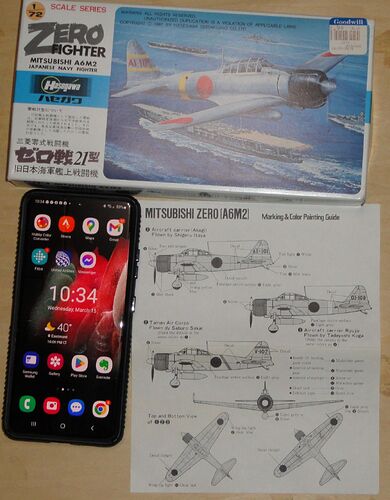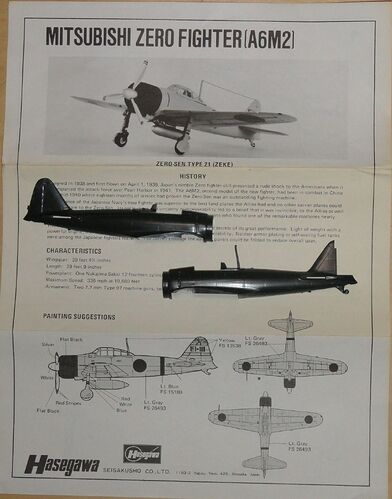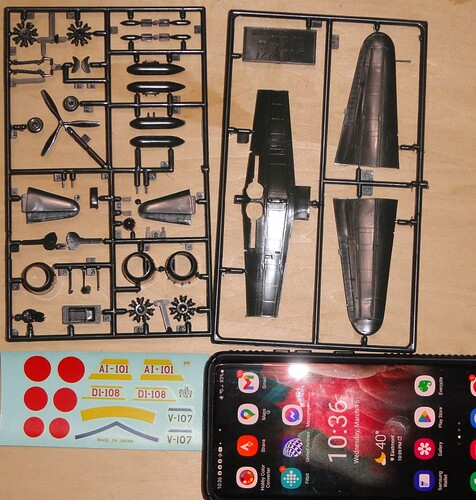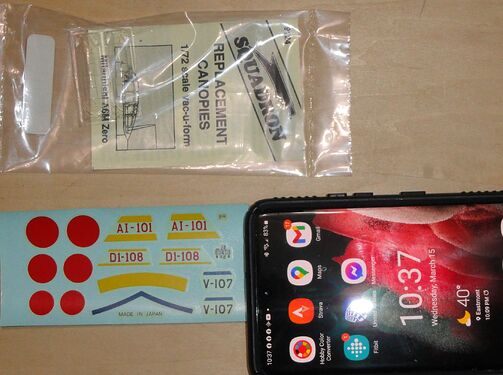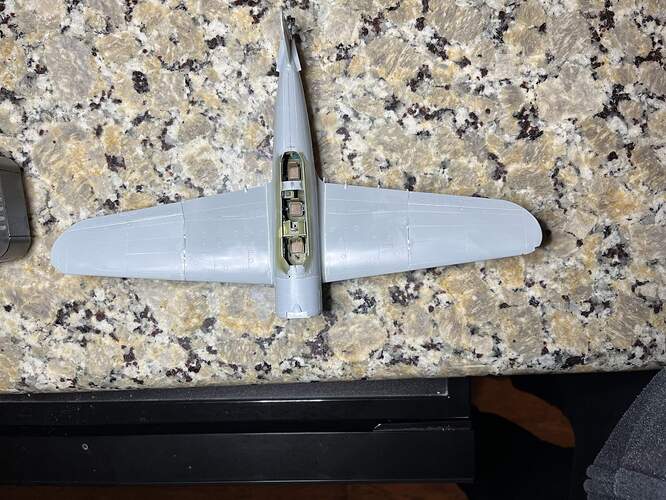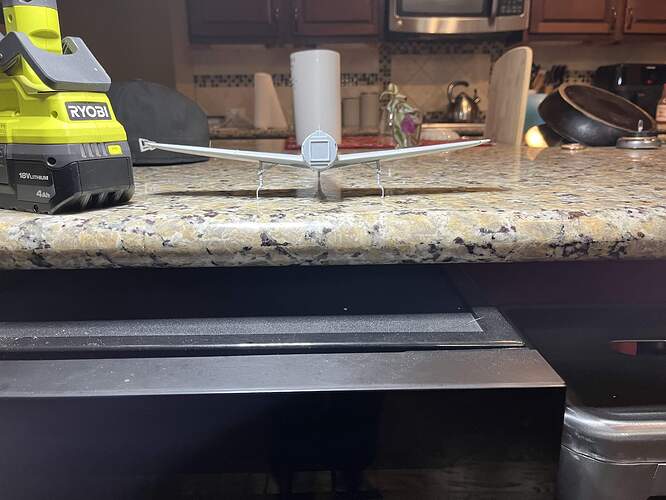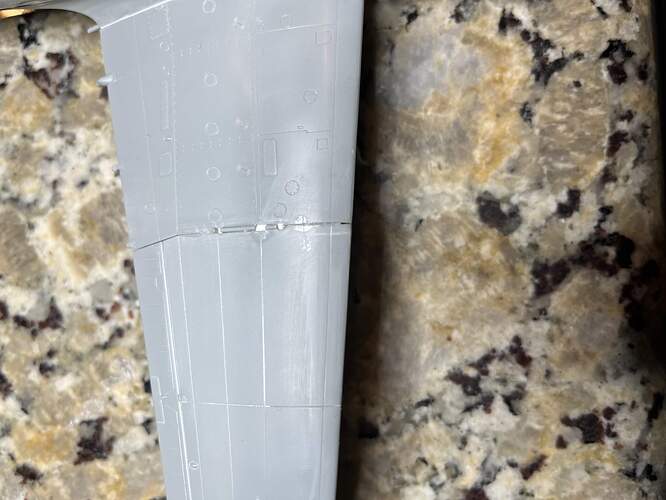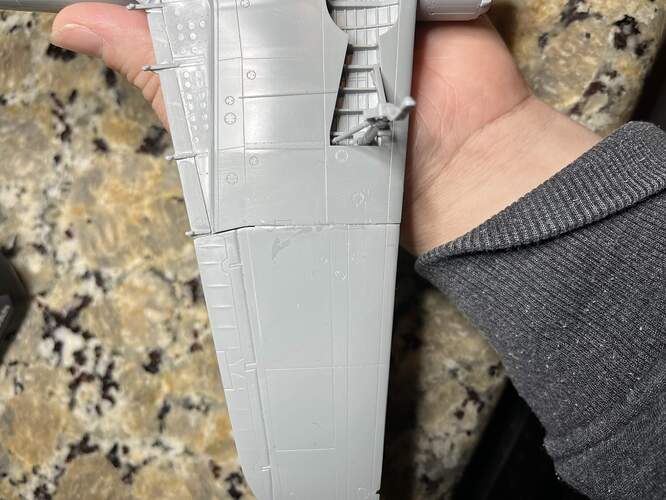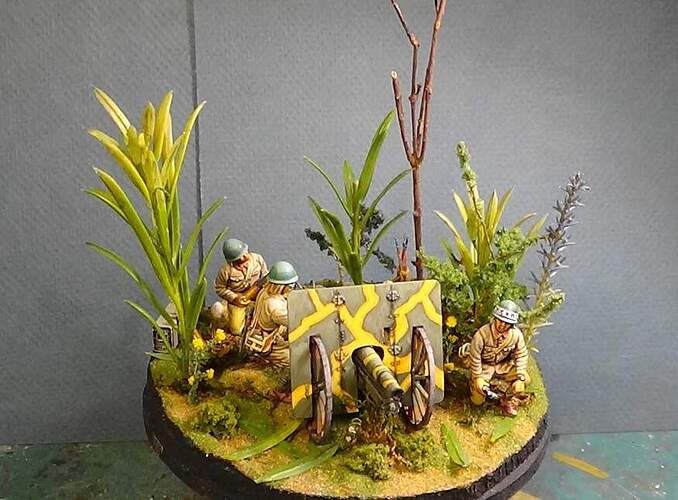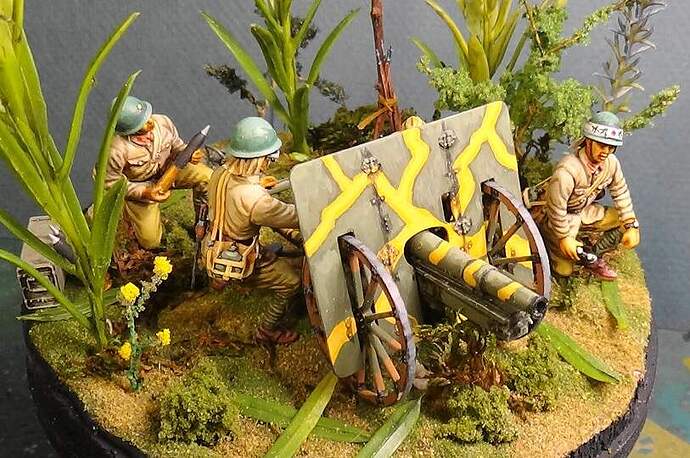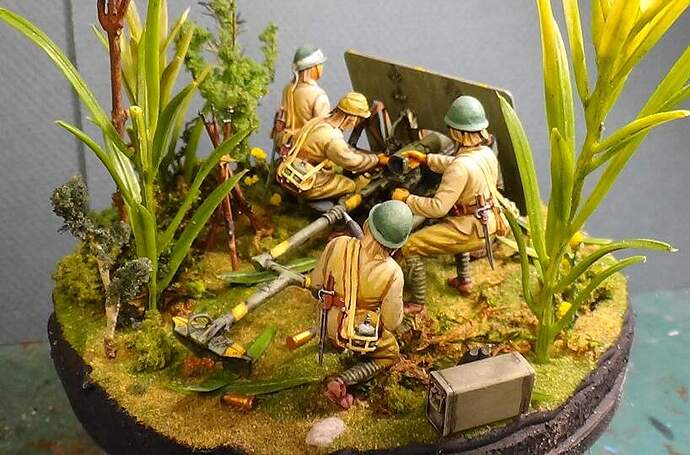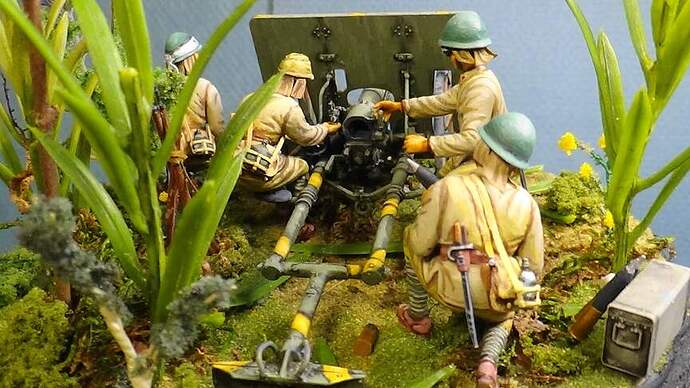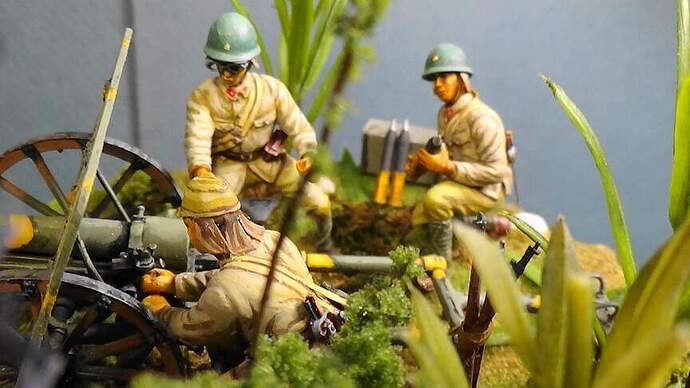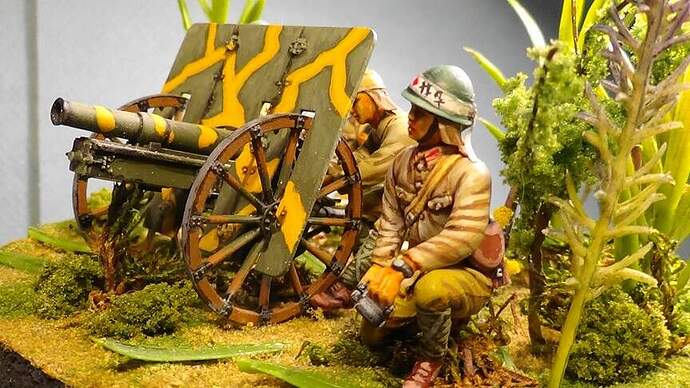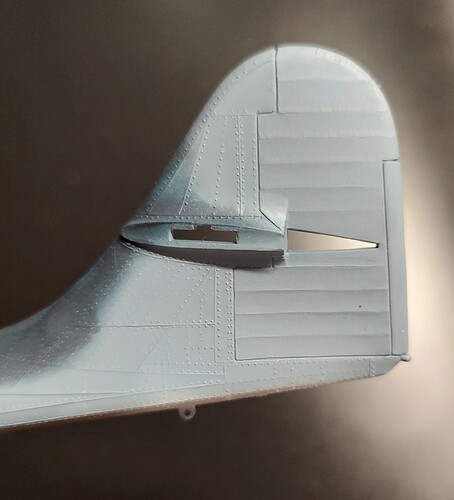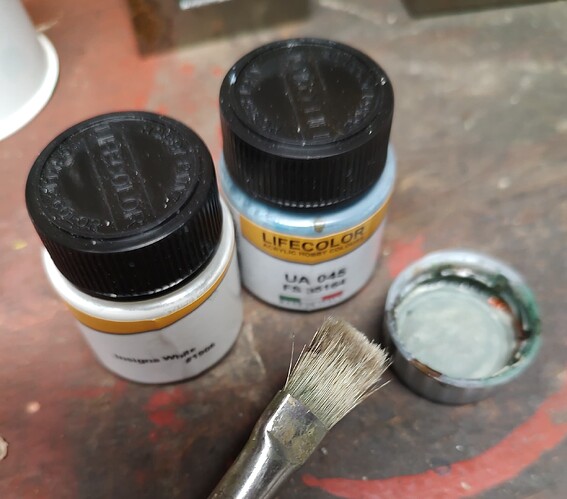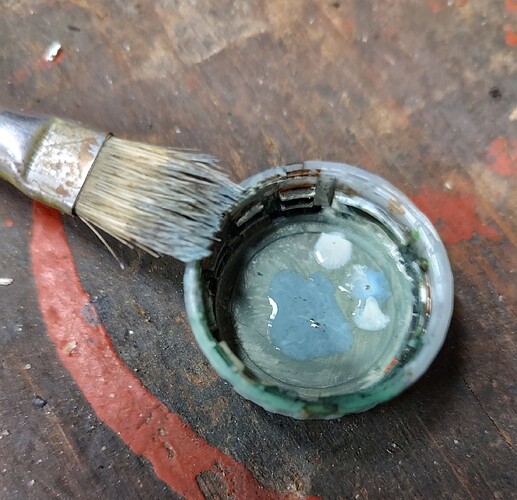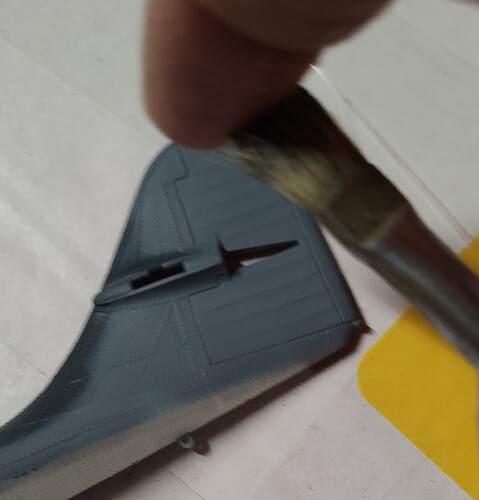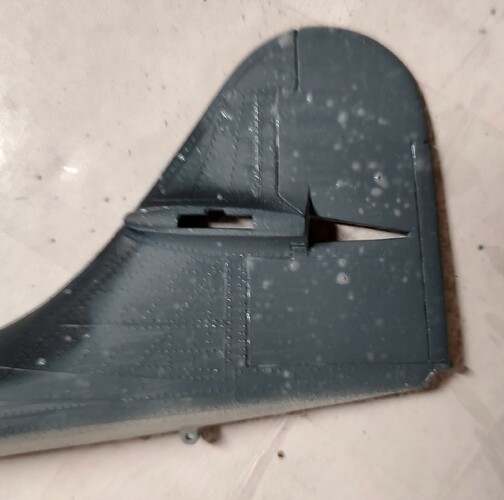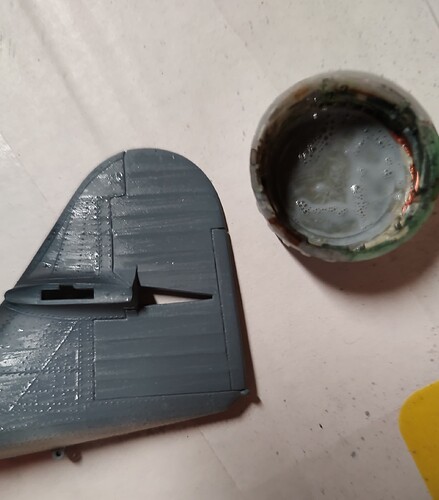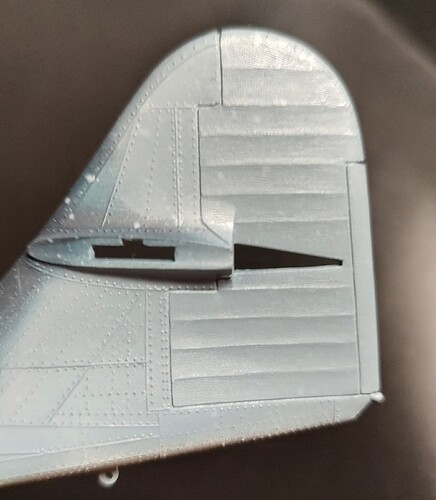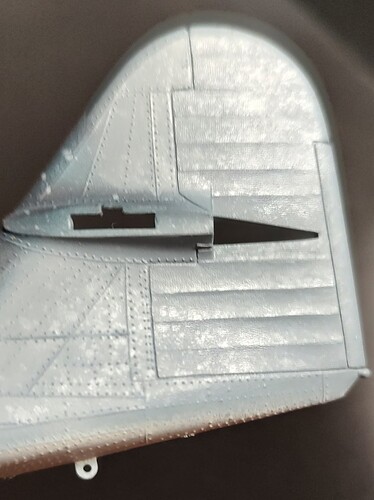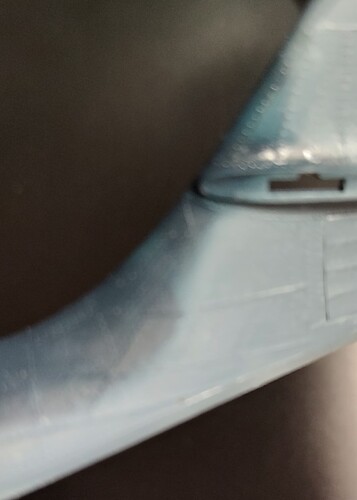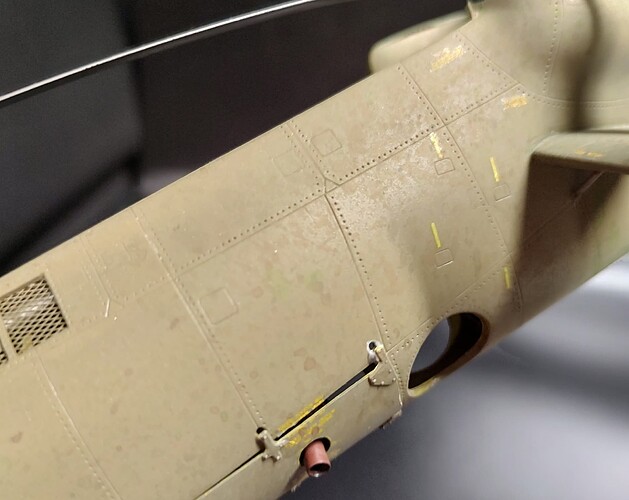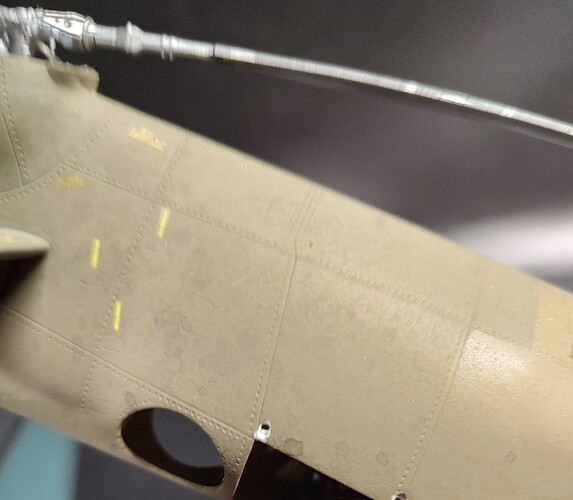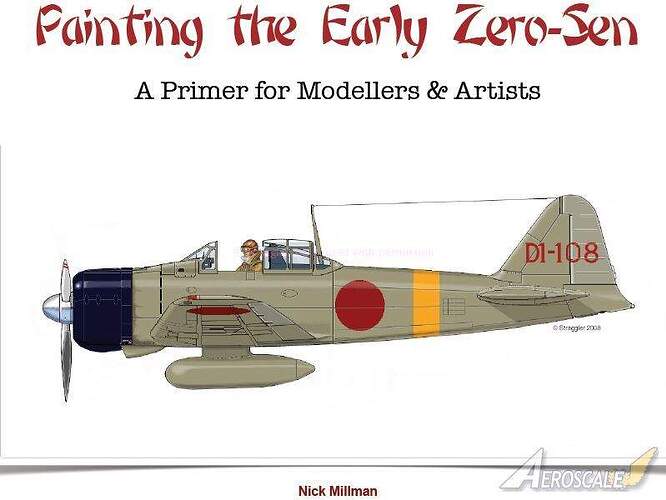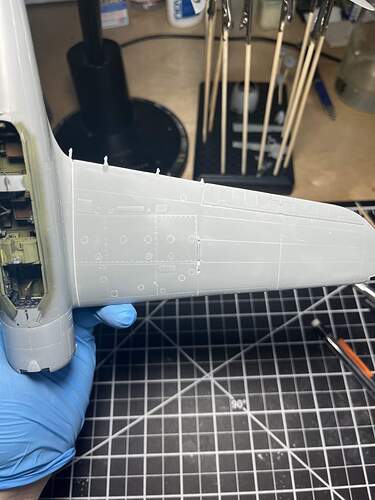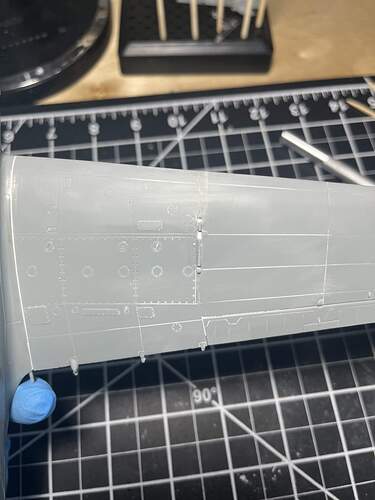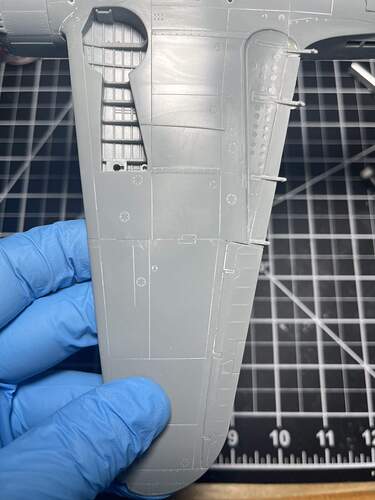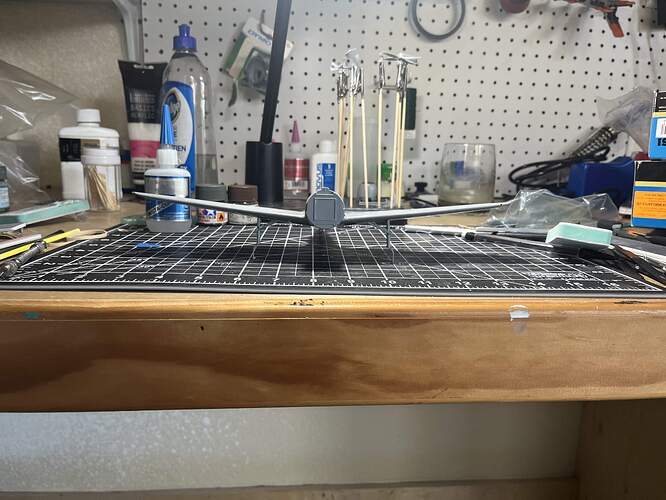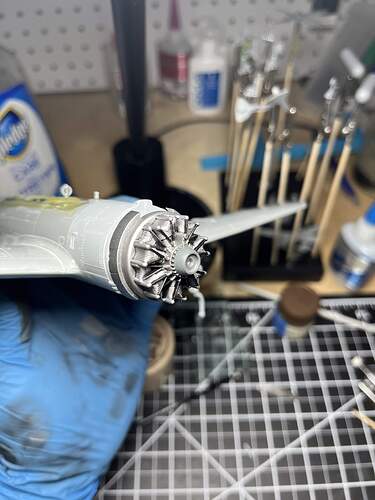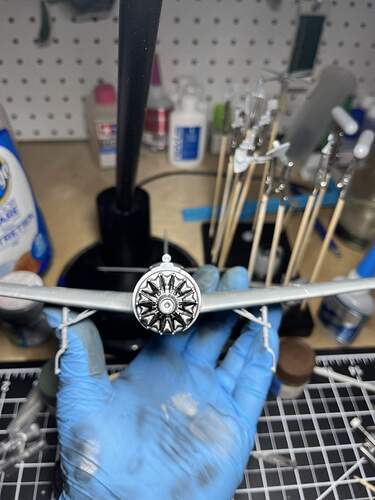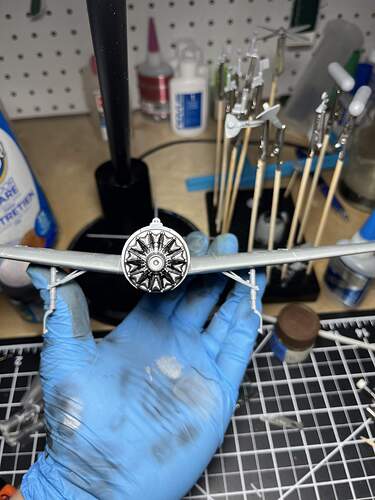What a neat idea! How do you spatter the paint? Is it flung by hand or blown of a brush somehow?
Hi Paul, I had a little extra time last night so I decided to make a demonstration. First, we’ll start out with a pristine nonspecular intermediate blue PBY tail. This is the ancient Revell kit so it is also festooned with raised rivets, which is completely accurate and authentic for a PBY. Just a bit out of scale. 
The tools of the pending disaster…
I suppose this technique is akin to color modulating. I’m not going to look up the technical terms but what I’m doing is just trying to break up the solid uniform color with random patterns.
Then I took some intermittent blue and put a smidge of white in it. It does not matter if you use white, gray, blue, red, whatever, just something to modify the hue.
Load up the stiff bristle acrylic brush. Doesn’t matter if you use a lot of paint or a little. The more paint or the thinner the paint, the more will spatter. You have to develop your own “trigger pull” for your finger to adjust how much you want to go out, whether big globs or tiny speckles.
Use your finger to bend to the bristles back and then let them flick forward. Here, you see the tail after spattering the paint on a dry surface. Ach du lieber! I’ve ruined my model!
No, it’s fine. The very thin spattered paint just has to dry. Applying it over a dry surface is a good way to simulate rust, or for aircraft, maintenance touch-ups, or spatters from splashing mud or other stuff all over the airframe. Here’s the tail with a very light film of water on it.
By spattering it on a semi wet surface, it helps dilute and diffuse the drops. When it dries, it looks like this:
Here’s what I see. Almost imperceivable changes in hue and mottled areas on the background intermediate blue. Very subtle. A random pattern of oxidized paint.
So what about those gigantic light blue spot eyesores on the dark blue paint above the stabilizers? “They’s ain’t fr’m 'round here.” In this case, I am using acrylics and the paint really hasn’t had a chance to cure so I just wetted it and wiped the errant drops away with the Mark 1 index finger.
In doing so, it left just a smidge of oxidation on the darker paint, as well. I can also be removed or left as is. Likewise, if you spatter the dark blue, you might get some over spatter on the light blue. Wipe it off (after your previous layers have cured) and look for even more happy changes to the base coat. As Bob Ross said, “Ever make mistakes? Let’s make them birds. Yeah they’re birds now.”
Finally, here is the H-21 I think I mentioned. You can see the subtle variations in the base olive drab.
That airframe has five or six or seven applications on it. If you’re interested, I’ll show you how I weathered a tank car and a derelict steam locomotive using the technique.
